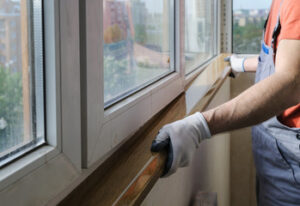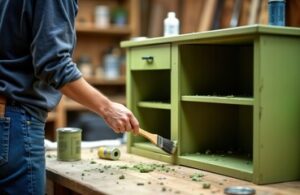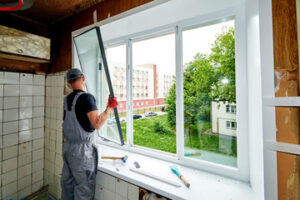Window Replacement Rockville MD is a great way to update the look of your home and increase its curb appeal. New windows are also more energy efficient than older models, saving you money on your utility bills.

Full-frame replacement windows replace the entire window frame and sash, which is ideal when there’s rot or water damage. This method also provides the best insulation.
Replacing old windows is more than just a home improvement project: It’s an investment in comfort, efficiency, and value. Whether you’re replacing just one or many windows, it’s important to understand the costs involved so that you can budget and plan accordingly. This guide will provide insight into the factors that affect window replacement prices, helping you make an informed decision about your investment.
The cost of window replacement can vary significantly based on the type and size of windows chosen, the material and style selected, and the installation method. For example, full frame replacements can be more costly than retrofit replacements, which simply replace the existing window sash within the existing frame. Additionally, premium materials like wood and aluminum tend to be more expensive than vinyl.
Energy-efficiency upgrades also affect the overall price of window replacement. While they may cost more upfront, they can help reduce long-term energy costs and can be eligible for financial incentives like rebates and grants.
Labor rates are another factor that can affect the final cost of window replacement. California and New York often have higher labor rates due to the high cost of living and increased demand for skilled tradesmen, while Ohio and Texas offer more affordable rates.
Window replacement companies can also add extra fees for certain features or services, such as debris removal, cleaning, and warranty extensions. These extra charges can sometimes be significant, so it’s a good idea to get quotes from multiple companies to compare prices and options.
Once you’ve settled on a budget for your window replacement project, it’s a good idea to consider any potential additional expenses that may come up during the project. For example, full frame replacements may require more demolition and construction work than retrofit replacements, which simply replace a window’s sash within the existing frame. This can result in more dust, dirt, and debris on your property.
It’s also a good idea to budget for any additional window treatments, such as blinds or shades, which can be installed at the time of installation. Lastly, it’s a good idea to consult your local building codes and regulations before beginning the installation process, as some areas have stricter requirements than others.
Energy Efficiency
Replacing old windows with more efficient options can help homeowners lower energy bills. However, this upgrade comes with added upfront costs, depending on the model chosen and where the home is located. Some states have higher demand for energy-efficient models, while others offer incentives or rebates to encourage homeowners to make the switch. The type of frame material used and the glass package also affect energy efficiency. For example, wood frames provide superior insulation compared to aluminum and vinyl options. In addition, double-pane windows have a higher thermal performance than single pane windows.
Energy efficiency is especially important in cold climates, where heating and cooling costs are typically the highest. However, window replacement can help reduce energy consumption in any home. Replacing existing windows with newer models can significantly reduce heat loss and air leakage, ensuring that home occupants stay comfortable throughout the year.
Window replacements can be more expensive than older models, but they are an investment that will pay for itself over time through reduced utility costs. Some models have specific features that increase energy efficiency, such as Low-E coatings or additional gas fill spaces. These options tend to cost more upfront, but they can help homeowners save up to $150 per year on energy bills, depending on their home’s location and energy consumption.
In addition to increasing energy efficiency, window replacement can also improve a home’s curb appeal and property value. If a homeowner is planning on selling their home, a well-maintained and attractive house can add up to 15% in increased value. Additionally, replacing old windows with energy-efficient models can help buyers feel confident that they are making a smart financial decision.
Whether you’re looking for a quick and easy home improvement project or are considering a major renovation, contacting the local Mr. Handyman can save you time, money, and headaches while ensuring that the job is done right. Our experienced pros can help you plan your next project and give you a free estimate. We also stand behind our Neighborly Done Right Promise, which guarantees your satisfaction.
Durability
Investing in new windows is a great way to improve your home’s aesthetic and increase its value. However, it’s important to choose a window with high quality materials and construction to ensure that it lasts. In addition, choosing windows that are energy efficient can help reduce your heating and cooling bills. Also, make sure to look for a warranty that covers both the manufacturer and installation.
The average window will last from 20 to 30 years, depending on the climate, material, and installation. Regular maintenance can extend their lifespan. For example, you should clean your windows regularly to remove grime and dirt. Also, you should lubricate hinges and locks to keep them functioning smoothly. You should also inspect them for cracks or damage and repaint or stain them to protect them from moisture and sun damage.
If you want to keep your windows in good condition for longer, you can opt for vinyl frames. These are made from polyvinyl chloride, which is a durable and affordable material. They are also easy to maintain, as they require little upkeep other than periodic cleaning. However, it is important to note that vinyl windows may not offer as much energy efficiency as other types of frames.
Another option is to choose composite windows, which are made from a mixture of metals, wood fibers, and vinyl. They are a cost-effective choice, and they can last up to 40 years or more. However, they are not as durable as wood or fiberglass, and they can be more expensive than vinyl.
Finally, you can opt for full-frame replacement windows, which are installed inside the existing frame. They are usually more expensive than inserts, but they provide a tighter fit and allow for more customization. It is important to hire a professional installer who has the right experience and skills to handle the job.
When installing new windows, it is important to work on a day when the weather is not too hot or cold. Extreme temperatures can cause materials to expand and contract, which can affect the seal and lead to leaks. In addition, working on a day when it is not raining can help prevent the windows from getting wet and damaged. If possible, it is best to replace all of the windows in a house at the same time. This will save on costs, as contractors will not have to travel between houses and can take advantage of bulk discounts for supplies.
Aesthetics
Window replacement is a project that can change the appearance of your home. You can choose from a wide range of styles to complement your home’s architectural style. The right design communicates your unique aesthetic and makes a statement that enhances your curb appeal. Moreover, the new windows can be used to bring in more natural light and provide better ventilation. In addition to these functional advantages, modern windows can reduce energy costs and provide greater comfort.
The aesthetics of a window are defined by the frame design, material, and color. Slim frames maximize glass area to let in more natural light and create an open, airy feel. On the other hand, thicker frames offer a more substantial look. You can also opt for window replacement that features a combination of these elements to achieve a desired look.
Aesthetic considerations are important for homeowners who want their windows to complement the style of their home. Modern replacement windows feature a variety of colors and materials, making it easy to find a style that suits your taste. In addition, some modern windows come with insulating technologies that help reduce energy consumption and cost.
Another important factor to consider when choosing a window is its durability. Choosing a durable window will ensure that your home is safe and comfortable for years to come. Ideally, you should consult a professional window installation company to avoid any issues with your windows down the road.
Window replacement is an investment that can dramatically improve the appearance of your home. The right window design can highlight your architectural features and create a beautiful backdrop for your furniture. If you are planning to remodel your home, the right windows will add to its beauty and value. It is important to find a window installer that specializes in residential projects. They will have the experience and knowledge to ensure that your windows are properly installed and will not leak or require maintenance in the future. A reputable installer will offer a warranty on their work and will be able to accommodate any special requests you might have for your windows.


